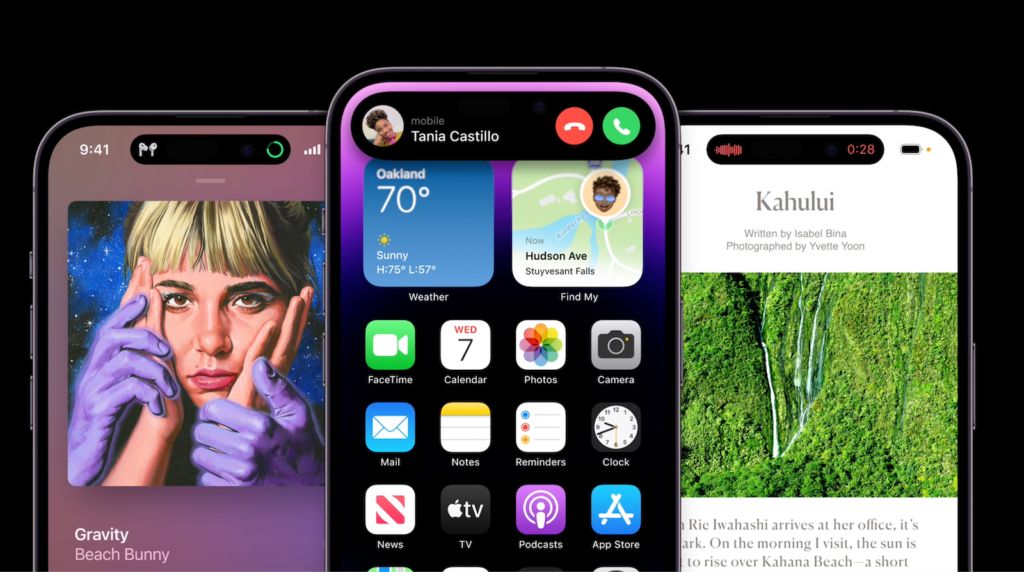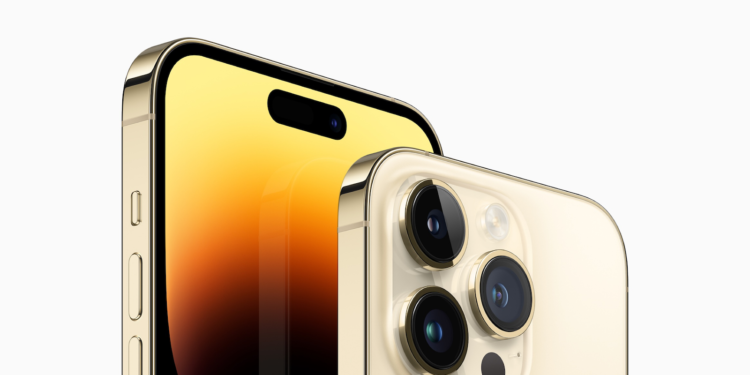The iPhone 14 Pro and iPhone 14 Pro Max will be delivered to pre-orderers and hit shelves this Friday, September 16. The first test reports have now been published - the Dynamic Island is considered promising.
The main new features on the iPhone 14 Pro models include an always-on display with a new pill-shaped Dynamic Island cutout, improved cameras with a 48-megapixel main lens, car crash detection and satellite connectivity for emergencies (US only for now), the A16 Bionic chip for faster performance, and new color options in dark purple and space black. The only differences between the iPhone 14 Pro and iPhone 14 Pro Max relate to the display size of 6.1-inches and 6.7-inches respectively, battery life, and the weight of the devices, as the Pro and Pro Max have identical camera systems again this year.
iPhone 14 Pro with Dynamic Island
Exclusive to the iPhone 14 Pro models, the Dynamic Island replaces the traditional notch found on all iPhone 13 models. Using software, the notch transforms into different shapes and sizes, such as for incoming calls, alarms, notifications, Face ID authentication, timers, live activities, and more.

While the Dynamic Island is certainly more useful than the notch on previous iPhones, Nilay Patel of The Verge says the feature's potential isn't fully realized yet, as no third-party apps support the Dynamic Island at launch. Third-party apps will be able to support the Dynamic Island once the Live Activities feature rolls out later this year. So writes Patel:
Right now, the Dynamic Island feels like one of those things that needs a year of refinement and developer attention before we really know how important it is.
iPhone 14 Pro: The always-on display
Jacob Krol of TheStreet saidthat the iPhone 14 Pro's new Always-On display had no noticeable impact on battery life in its tests:
From my testing so far, using the Always-On display has no negative impact on battery life or overall runtime on the 14 Pro or 14 Pro Max. I still managed a full day with the iPhone 14 Pro with moderate use, while the larger 14 Pro Max lasted a day and a half with the same usage—likely with battery capacity as well. Apple has highlighted some improvements in the new A16 Bionic, which has cores designed to efficiently operate the display.
48-megapixel camera
Raymond Wong of Input tested the iPhone’s new 48-megapixel main lens and was impressed by the 48-megapixel ProRAW photos. But he saidthat he could hardly notice any difference in daylight compared to the pixel-poor 12-megapixel photos.
I've tested a lot of Android phones with high-megapixel camera sensors and they've always disappointed me in some way. Apple's ProRAW DNG was a bit disappointing for the iPhone 13 Pro and 12 Pro, because you can barely see any more detail in a 12-megapixel RAW photo than you can in a 12-megapixel JPEG. Not so with 48-megapixel ProRAW files: These images are huge (often between 70 and 80 MB) and the amount of detail you can get is downright insane for a phone.
Dark Purple and Space Black colors
Wong also shared his thoughts on the new Deep Purple and Space Black color options:
My iPhone 14 Pro review unit is Space Black. I love it. The glass back and stainless steel frame are noticeably darker than the gray iPhone 13 Pro in Graphite; like a mix of the black and the jet black iPhone 7. My iPhone 14 Pro Max review unit is Deep Purple, a dark purple that sometimes looks gray or black. Both look very elegant, but are still a fingerprint magnet. You can also get them in silver and gold.
A16 Bionic Chip
Wong shared the Geekbench 5 results for the iPhone 14 Pro models, which show an increase in multi-core performance of up to 16% compared to the 13 Pro:
- iPhone 12 Pro: (A14 Bionic): 1,586 / 3,937
- iPhone 13 Pro: (A15 Bionic): 1,725 / 4,722
- iPhone 14 Pro: (A16 Bionic): 1,875 / 5,495
Overall, the testers were impressed by the devices. All four iPhone 14 models were announced by Apple last week and have been available since September 9th pre-ordered The devices will hit the shelves on September 16, with the exception of the iPhone 14 Plus, which will be available from October 7. (Image: Apple)





